2m, 1.8m, 1.5m, 1.4m, 1m.
Different countries recommend different distancing guidelines to help limit the spread of coronavirus. As parts of the world begin to leave lockdown, some of these guidelines have begun to be refined – Denmark reduced its recommended distance from 2m to 1m in May, and the UK now advises people to stay 1m+ away from others, rather than 2m in all circumstances. The question is how likely people are to comply with this new rule.
Looking back, surveys conducted in the UK in May found that up to 90% of people said they’ve been observing the 2m apart rule ‘at all times’. This is reflected in quantitative data, to a point. Analysis by the company Vivacity, drawing on 363 sensors from several locations across the UK, shows that while the number of interactions within 2m in city centres did decline by 95% after the lockdown in March, it has been on the up over the last few weeks – with only about 54% of pedestrians strictly following the 2m guidance.
Figure 1. Number of interactions within 2m distance decreased by 95% during the lockdown
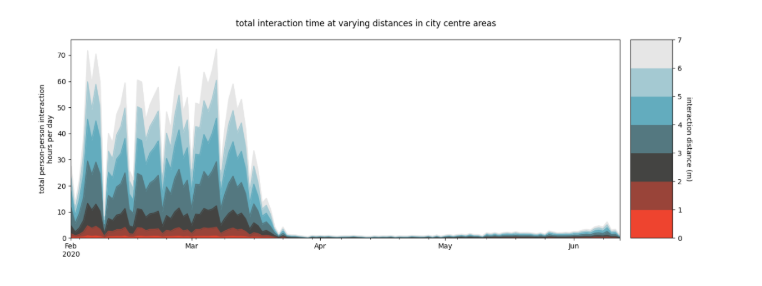
Do people misjudge distances?
So how good are we at estimating these distances? The way we perceive distances can depart from reality. For instance, we think that desired and threatening objects are closer than neutral items. In a small experiment with BIT’s own staff and their households, we found that people tended to underestimate 2m and overestimate 1m.
Insight 1) Given that we might overestimate our judgment of 1m, we might expect people to now keep a distance of slightly more than 1m.
Figure 2. People tend to underestimate 2m and overestimate 1m distance
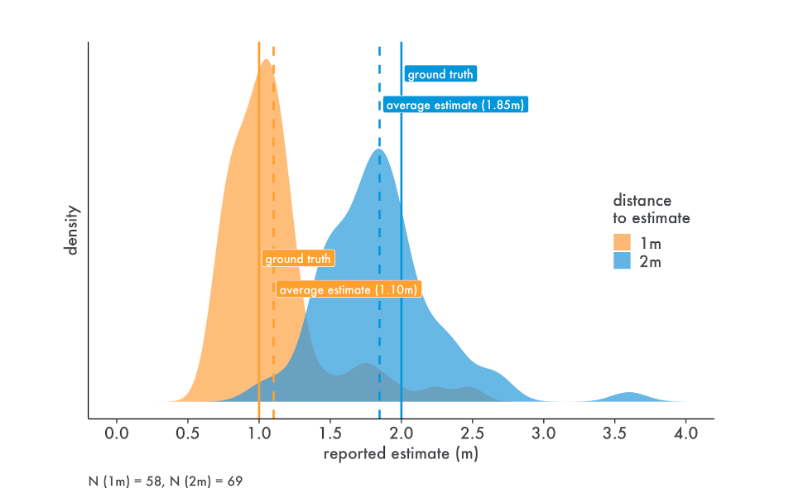
From a behavioural perspective though, we might be worried about the impact of anchoring. A move from 2m to 1m will likely be judged in relation to this initial ‘anchor’ value (2m) which could bias people’s estimates. So in the same experiment, we looked at whether people’s estimates of 1m distance varied depending on whether or not they were first asked to estimate a 2m distance. The answer, reassuringly, seems to be no. Without a 2m anchor, participants estimated a 1m distance to be 1.1m away from a reference point. Having participants first complete a 2m estimate did not influence their subsequent 1m estimate, which remained at 1.08m away on average.
Insight 2) Will people misjudge what 1m looks like now that they’ve gotten used to 2m? Perhaps not.
Figure 3. (No) anchoring effect of moving from 2m to 1m distance
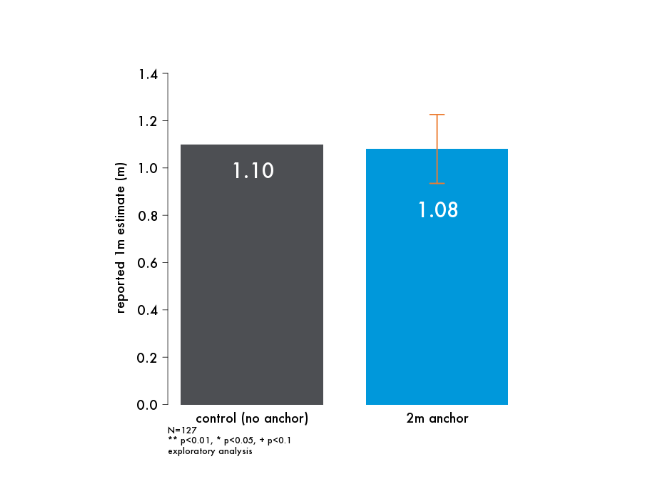
Whatever the official guidance, people naturally have a notion of space that separates them from others. The very term ‘social distance’ was in fact defined by Edward Hall, the father of proxemics – the science of the human use of space – as the distance for interactions with acquaintances, placed at 1.2 to 3.7m, as opposed to a closer perimeter of ‘personal space’ – 0.5 to 1.2m – reserved for family and friends. Ideas on the shape of this space have come full circle: from early ideas of concentric circles, through to elliptical patterns and half-arches, and all the way back to a circular shape, found in recent lab studies.
Figure 4. Concepts of personal space across time: a) Hall (1966), b) Hayduk (1981), c) Helbing and Molnar (1995) and d) Grin-Lajoie et al. (2008)
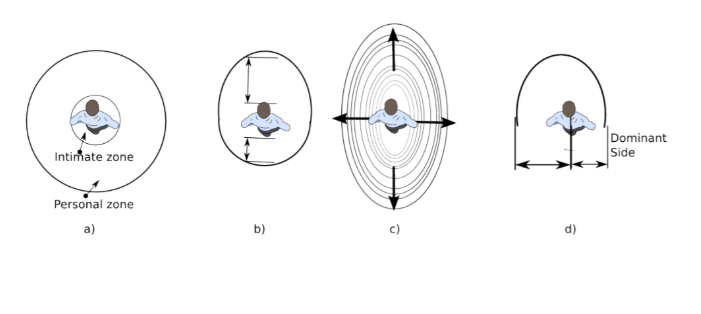
The shape of people’s personal space has an added significance in the context of COVID. There’s general agreement that orientation matters in addition to distance: face-to-face at 1m can be different to back-to-back. In a COVID world, ideally we should modify our personal space to be less circular and more of an ellipse or cone that is deeper to the front. If it helps you to picture it, we need to move away from those distinctive ’swim noodle’ or other hats seen in some German cafes, Chinese schools and elsewhere, to something more akin to extended baseball caps. That said, any distance will be of limited help in crowded, poorly ventilated rooms – which is where the ‘+’ comes in as the new guideline recommends avoiding sitting face-to-face, cutting the number of people in an enclosed space, and frequent hand-washing.
Shape aside, environmental psychology has also shown that spatial preferences vary according to age, gender, context and culture. It turns out that Brazil and Mexico are Englands’ ‘closest’ peers when it comes to spatial preferences. In a recent study of 42 countries, England ranked in the middle of the spectrum, with people on average preferring to stay 0.5m apart from family and friends, 0.8m from acquaintances, and 1m from strangers.
Insight 3) Given many people in the UK naturally keep 1m apart from strangers, it’s reasonable to expect that most will not find it difficult to comply with the new official advice.
Figure 5. Global comparison of preferred interpersonal distances
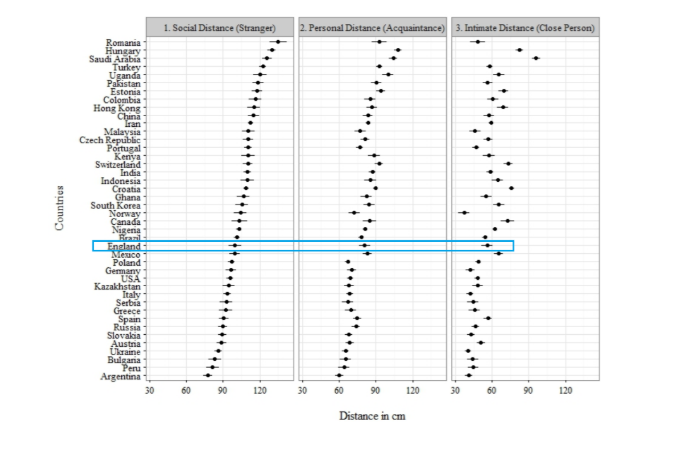
In sum, this is a tricky area for governments and businesses. Some of the mitigations to reduce the chance of COVID spreading can be encapsulated by regulations and guidance, such as screens at tills, and markers to help us queue with a suitable gap. But a lot of the regulation of personal space is something that we all do largely without thinking, albeit with the prompts and nudges of those around us. It’s hard for a government to reshape our personal space. Fortunately, some of these habits build on those already familiar to us…






